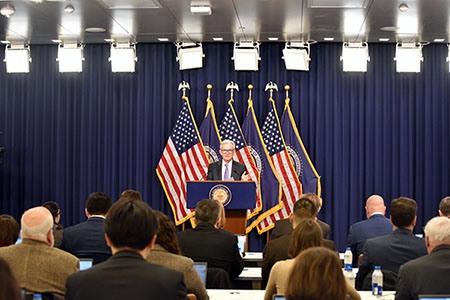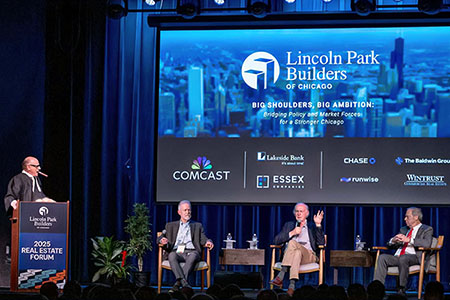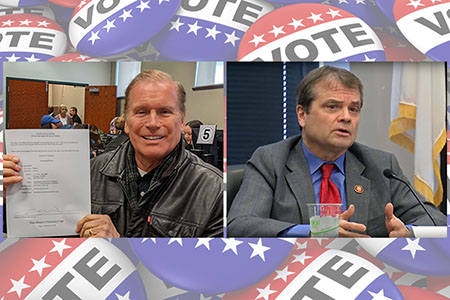14 years ago, about 70 percent of Americans were homeowners. Today, it’s 63 percent. And of those renters, many of them young adults, 27 percent spend more than half their monthly income on rent. What’s behind this erosion? President Clinton? Republicans? Don DeBat says it was Wall Street and banking industry greed.
Oct. 30, 2015 – With more and more Millennials choosing to rent apartments, many housing advocates are asking, “Whatever happened to the American Dream of home ownership?” Owning a home once was considered essential to the stability and future of the United States, experts say. When President Bill Clinton left office in January 2001, nearly 70 percent of Americans were homeowners – the highest rate of owning in our nation’s history. However, the nation’s home ownership rate has been falling for the past decade, slumping to 63.4 percent currently, the lowest it has been since 1967. And today, home ownership is not a hot topic for presidential hopefuls on the campaign trail. As a result, the nation’s young people are swimming in a sea of apartment rent receipts while paying off student loans. Nearly 11 million renter households – 27 percent of all renters – now pay more than half their incomes for housing. Today, Republicans blame the Great Recession of 2008 partly on the efforts of the Clinton Administration to increase home ownership. Easy to obtain, low-interest loans backed by federal mortgage giants Fannie Mae and Freddie Mac caused a housing bubble, a stock market crash, and a financial crisis, they say. The truth is that Wall Street and banking industry greed had more to do with sparking the mortgage foreclosure crisis and the Great Recession, which nearly became the second Great Depression. Many borrowers came for the low-interest mortgage, could not stay for the higher rate The blame for the Great Recession was focused on the eroding standards for mortgage lending and predatory lending practices often targeted at minority borrowers. The so-called “toxic sub-prime home loans” were packaged into mortgage-backed securities and sold to investors. When the bargain introductory interest rates ended on the sub-prime home loans, borrowers couldn’t meet their higher loan payments and the loans fell into delinquency. This had devastating effects throughout the financing system. In addition, the explosion of Wall Street trading in unregulated derivatives helped fuel the crisis and spread it to investors worldwide, creating a global meltdown. The foreclosure crisis that followed trickled down to damage local and state economies and still is being litigated in the courts. As a result, Congress passed the Troubled Asset Relief Program (TARP) a $700 billion bailout that was supposed to save the banking industry, stop the mortgage foreclosure crisis, and stabilize the economy. TARP may have saved our financial system, but experts say the main beneficiaries were the same big banks who created the crisis. While the big banks were penalized with fines, the Justice Department did not track down the managers and employees who were responsible for creating the toxic loans. Bailouts being paid back but system still mending Meanwhile, Fannie Mae and Freddie Mac were put under control of the Federal Housing Finance Agency in September 2008, and eventually received $187.5 billion in bailout money. During the nation’s slow, seven-year housing recovery, the companies have paid back a whopping $239 billion to the U.S. Treasury. However, with Fannie and Freddie in conservatorship, critics say affordable housing largely has been forgotten in America. Experts say the nation’s banking crisis happened because there were too many gaps in regulation and no one was looking out for the system as a whole. “It’s important for regulators to be vigilant and keep monitoring,” said former Federal Reserve Chairman Ben Bernanke, who noted that the Fed and the Financial Stability Oversight Council now are constantly surveying the entire financial system. In addition, the Dodd-Frank Act created the Consumer Financial Protection Bureau to prevent mortgage abuse in the future and help put the American Dream back on its feet.
On another positive note, as the job market improved and the number of mortgage foreclosures declined, the nation’s average FICO credit score rose to 695 in September 2015, the highest it has been since 2005. The average FICO score for those approved for mortgages now is 723. However, in the aftermath of the financial crisis, lending requirements now are far more stringent. Many young first-time home buyers are scratching to save down payment cash while paying off student loans. So for many, the American Dream still is on the distant horizon.
|






 Previous story:
Previous story: 








